When it’s time to get out in the wild in the United States, you’ve got an astounding 63 national parks to choose from. But that’s just the problem: you have to choose. To make it easier on you, Matador looked across the country and selected the absolutely best national park for your circumstances — whether that’s traveling with kids or a furry friend or your fiance — or what you plan to do, be it camping or fishing. Some of the national parks are better known, some are less expected, but all are perfect for what you need.

The Best US National Parks for Every Type of Traveler
Best national park for kids: Lassen Volcanic National Park, California
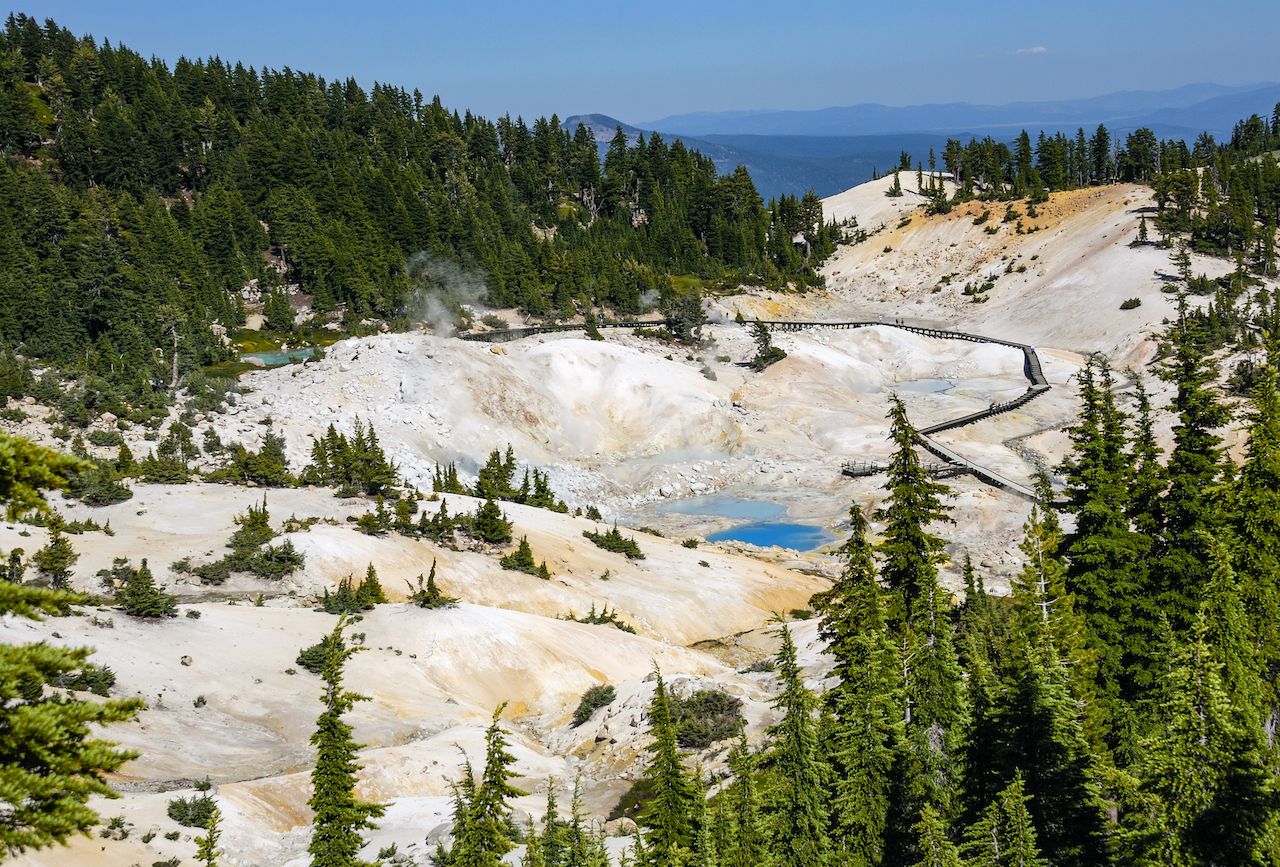
Photo: Dreamframer/Shutterstock
Kids love volcanoes, and there’s no better national park in the contiguous United States to explore them than Lassen. Little ones will learn that there are four types of volcanoes — lava domes, cinder cones, composite volcanoes, and shield volcanoes — and they can see all four within the park. In fact, the park’s namesake Lassen Peak is the largest plug dome volcano in the world.
Your kids will walk next to boiling water and gurgling pools of mud, dazzled by the plumes of fumaroles heading skyward. They’ll see vast fields of hardened lava, and see how life is springing back slowly over time. It’s all probably more interesting to them than another pretty mountain view — although there are plenty of those as well, since Lassen is located where the volcanic Cascade Mountains meet the Sierra Nevada range. So the 150 miles of hiking trails don’t just pass by eerie calderas, but they also traverse pine forests and skirt piercingly blue alpine lakes. Of these, Manzanita Lake is the best for boating, and you can rent kayaks, canoes, or stand-up paddles.
In winter, the family can cross-country ski or snowshoe, perhaps joining a ranger-led snowshoe excursion. Kids should also stop by the visitors center to pick up a Volcano Club Card and complete the activities to be eligible for a Volcano Club patch.
Best national park for hiking: Olympic National Park, Washington
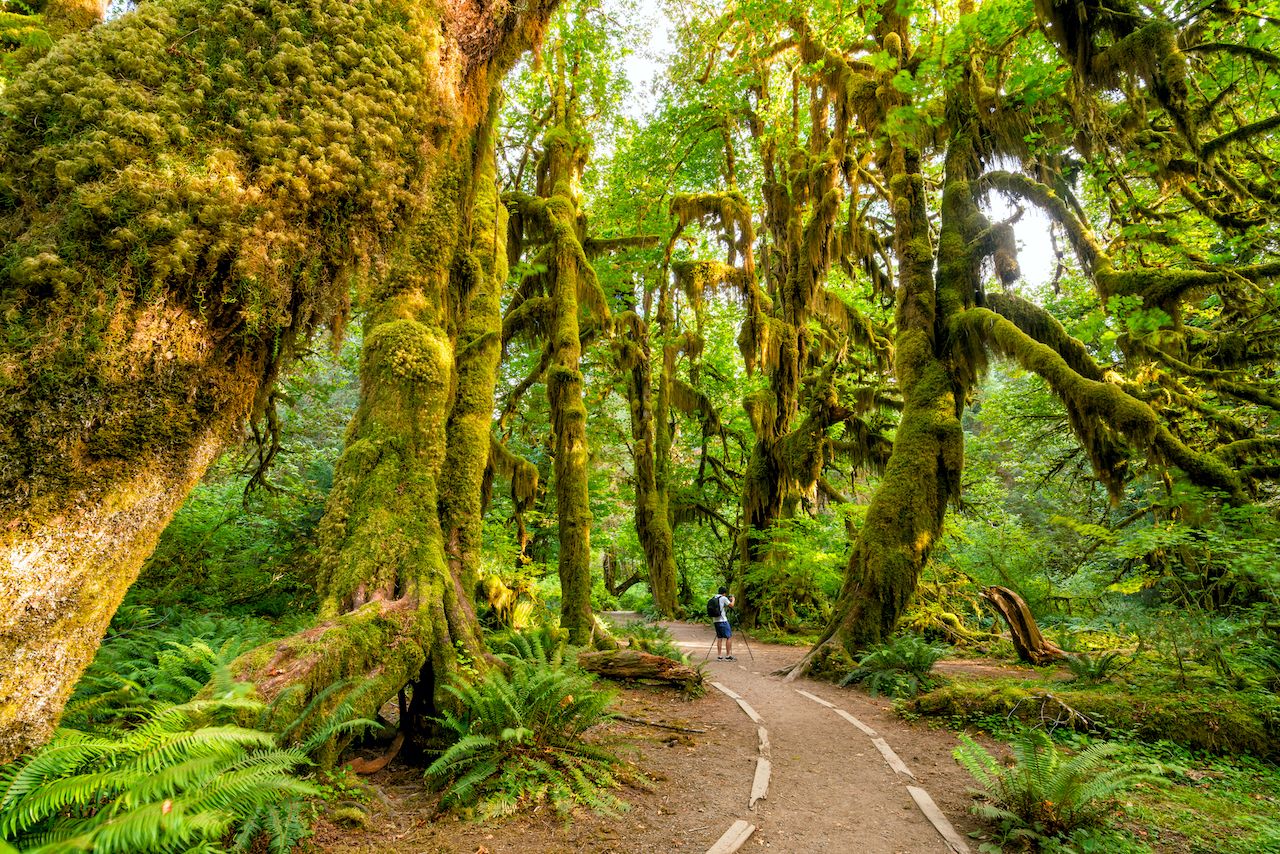
Photo: f11photo/Shutterstock
For diversity of landscapes, it’s hard to beat the 611 miles of trails at Olympic National Park in Washington state’s Olympic Peninsula. One of the best-loved hikes in the park takes you through the Hoh Rain Forest, one of the world’s few temperate rainforests, which gets 140 inches of rain per year. The ground is packed with ferns while trees are completely covered in bright green moss, making for an eerie, emerald-hued version of an enchanted forest. While that ramble is flat and suitable for all levels, more rigorous trekkers have plenty of other options. You can hike to waterfalls and glacier-fed rivers, or along Hurricane Ridge, always windswept and often snow-covered well into summer.
Add to that coastal trails, since a long stretch of the park runs along the wild Pacific Ocean, complete with sea stacks and tide pools, and it comes out to an astounding variety of hiking choices. Your Instagram followers won’t believe that all those photos — with glowing green trees, glacier-capped peaks, alpine lakes, cascading waterfalls, and crashing ocean waves – each came from a visit to a single, stunning national park.
Best national park for camping: Sequoia & Kings Canyon National Park, California
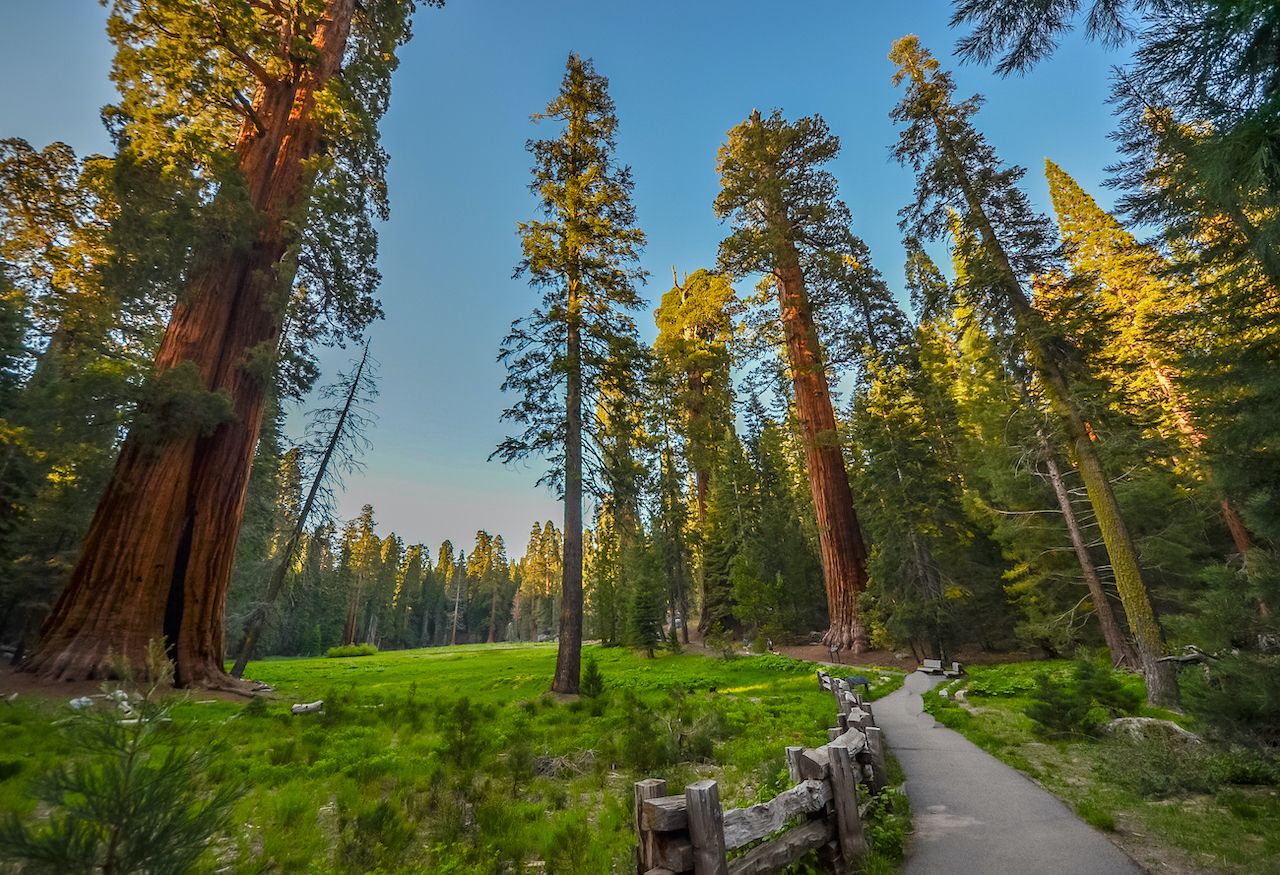
Photo: Asif Islam/Shutterstock
The two jointly administered parks have 14 campgrounds between them, including everything from lower elevation campsites in the foothills that are snow-free in winter to campgrounds at higher altitude that stay pleasantly cool in the warmer months. Kings Canyon and Sequoia — which rival Yosemite with their own sheer granite walls, scenic meadows, and alpine peaks — nonetheless attract far fewer visitors than their northern neighbor — meaning you’re also more likely to snag a campground here in the height of summer.
The three campgrounds near Grant Grove put you in strolling distance to the General Grant tree, the second largest living organism in the world. Waking up surrounded by stately giant sequoias – that have each been growing for thousands of years — is its own form of meditation, as stress-eliminating an experience as you can find. The campgrounds in Cedar Grove lie along the Kings River, flanked by King Canyon’s granite walls, while the Lodgepole lies at 6,800 feet. From there you can walk two miles to Giant Grove and behold the German Sherman tree, the largest tree on the planet. Full-service campgrounds come with showers, hot water, electrical hookups, and a nearby general store while primitive campgrounds come with the sound of silence. You can also camp in the high Sierra backcountry with a permit.
Best national park for stargazing — Bryce Canyon National Park, Utah

Photo: Johnny Adolphson/Shutterstock
National parks in desert areas from California to Texas all have incredible night skies — located far from city lights and in arid plains where the air is clearer. The dry weather is free from the moisture that muddies crisp astral views; it also ensures you’re more likely to have a rain- and cloud-free night to begin with. Among all the great nighttime viewing options, we’re going with Bryce Canyon on this one, because there’s nothing quite like observing the stars framed by the canyon’s hoodoo spires.
Moreover, Bryce makes stellar observation easy and welcoming, with over 50 telescopes available for use at the Bryce Canyon City Telescope Field, as well as programs led by
astronomers certain nights of week, and an annual Astronomy Festival. In the winter, you can take ranger-guided snowshoe hikes on evenings with a full moon.
Best national park for backpacking — Grand Teton National Park, Wyoming
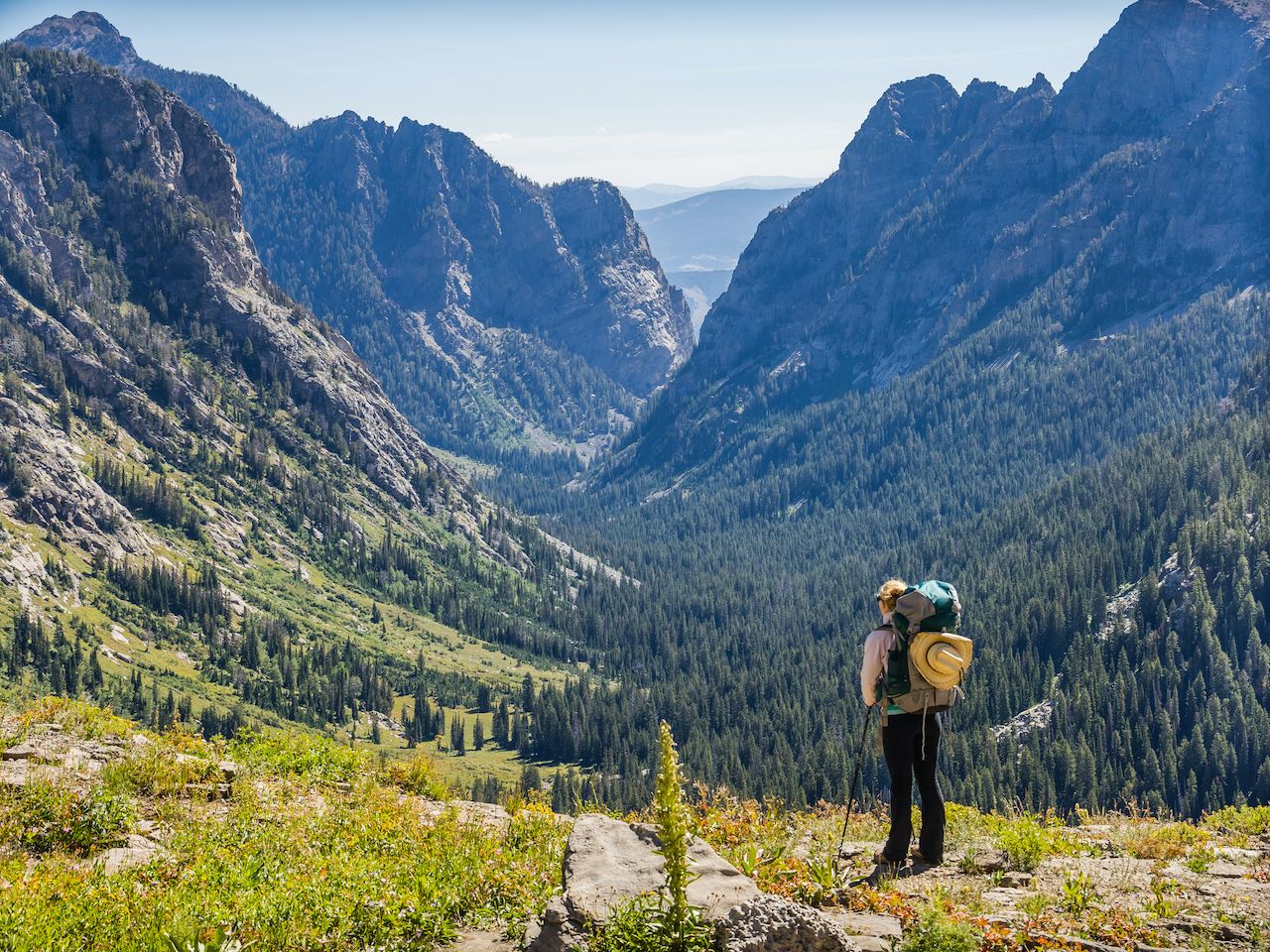
Photo: aaronj9/Shutterstock
The untamed wilderness of Grand Teton National Park was pretty much meant to be explored on multi-day backpacking trips, with the signature Teton Crest Trail — which runs 26 to 37 miles, depending on routing — widely regarded as one of the most stunning treks in the country. The trail runs alongside the Teton Range, nearly always keeping in view the three Teton peaks, the South, Middle, and Grand Teton. You’ll hike along Hurricane Pass, alongside Lake Solitude, and even the Death Canyon Shelf, passing fields bursting with wildflowers.
There are also several single-night overnight trips you can take within the park’s 485 square miles, such as the 23-mile loop through Paintbrush Canyon to Inspiration Point and Jenny Lake. The Tetons are part of the greater Yellowstone ecosystem, and you’re likely to see moose, pronghorn, and bison. You’re in bear country here, as both black bears and grizzlies call the Tetons home, so you’ll need to follow precautions like ensuring bears aren’t surprised by your presence and storing food in bear-safe canisters. (Consider non-toxic bear spray as well.) You’ll also need a backcountry permit; you can get some in advance, but the park holds a third of these for walk-ins.
Best national park for wildlife: Everglades National Park, Florida

Photo: jo Crebbin/Shutterstock
Among the national parks known for wildlife, Yellowstone gets most of the attention from documentarians and animal lovers. Down at the tip of Florida, however, the Everglades offer the chance to see animals in their natural habitat that you won’t find anywhere else. The Everglades cover around 1.5 million acres, making it the largest subtropical wilderness in the US. There are spots of freshwater a short distance away from seawater and the brackish home of mangrove forests. Winding footpaths over the water meet the terrestrial environment. This diversity is part of what makes it such a thrilling spot for wildlife.
Everglades National Park is the best place to see manatees, flamingoes, alligators, river otters, and the endangered Florida panther. It’s also the only spot in the US where alligators live alongside American crocodiles, which are at their northernmost reaches in Florida. Pythons that have escaped (or were released) from captivity have hurt the population of native species, but there’s a chance you’ll still have to wait for an alligator (or one of the other 50 reptile species in the park) to cross your path while a number of the 360-plus species of birds found in Everglades National Park fly overhead.
Best national park for RV camping: Shenandoah National Park, Virginia
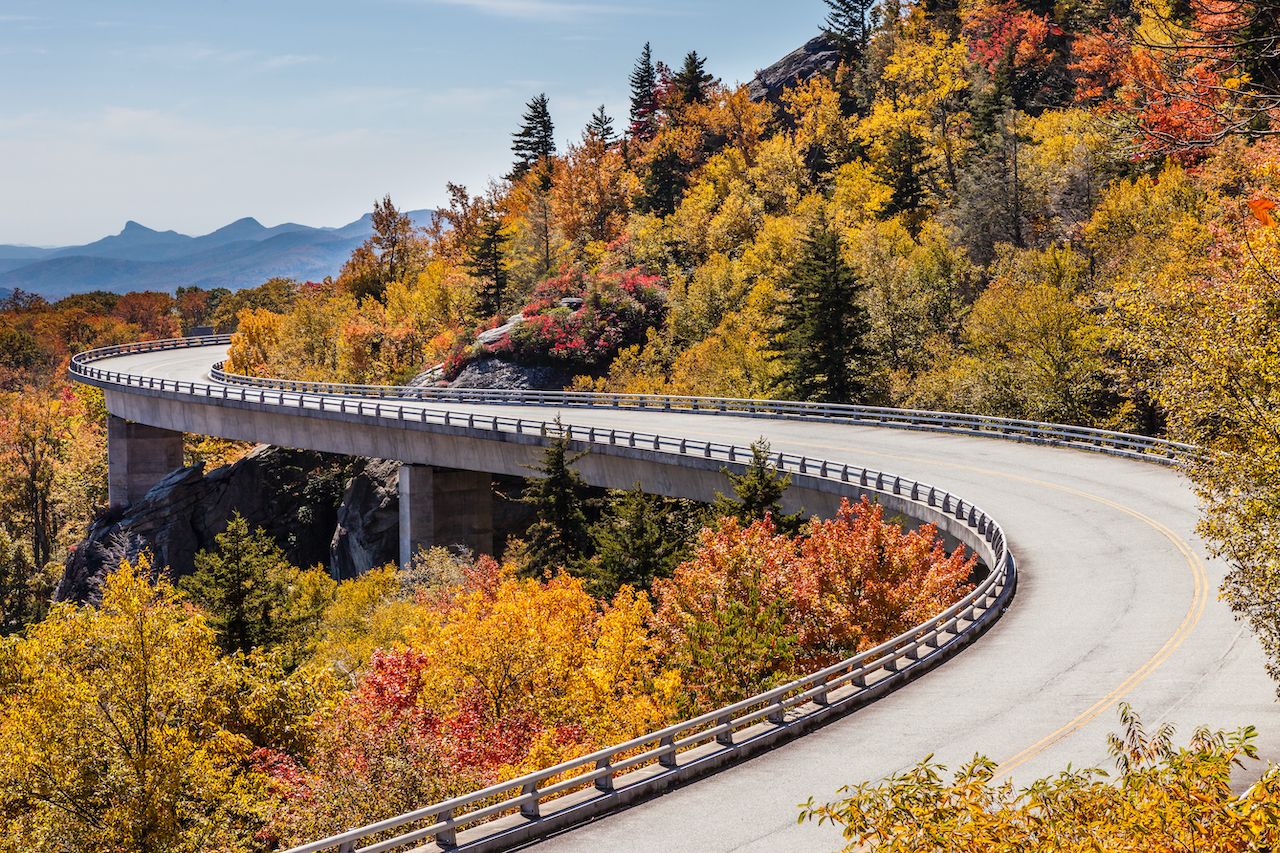
Photo: Anton Ermachkov/Shutterstock
The best national parks for RVs have gorgeous roads and parking spots in the center of nature. Shenandoah National Park is a short drive from the Eastern Seaboard and offers one of the most scenic roadways — especially in the fall when the leaves start to turn. The first order of business for RVers should be to cruise the curvy Skyline Drive to catch the views of the mountains. RV-friendly campgrounds are scattered throughout, making it easy to stay close to the waterfalls and extensive hiking network in the park.
Shenandoah is a must for the RV crowd for another reason as well: it’s connection to the Blue Ridge Parkway. After exploring Shenandoah, extend your trip by driving onto the winding road, which covers 469 miles through the Appalachian Highlands and is the connection between the Great Smoky Mountains and Shenandoah National Parks. The drive has some tight curves, but nothing unmanageable — just make sure you pull off at a designated spot before stopping to soak in all the beauty there is to see. Among the natural wonders to see along the Parkway: the highest mountain peak in the east at Mount Mitchell, the oldest river in North America (ironically called New River), the highest waterfall east of the Rockies at Whitewater Falls, and the deepest gorge east of the Grand Canyon at Linville Gorge.
Best national park for fishing: Great Smoky Mountains National Park, Tennessee

Photo: Geir Olav Lyngfjell/Shutterstock
Variety is a fisherman’s best friend, and you’ll find plenty of it in Great Smoky Mountains National Park. There are nearly 3,000 miles of streams (all of which allow fishing), and around 20 percent of them make up one of the last wild trout habitats in the eastern half of the US. Fishing is allowed year-round, and you can catch various species of trout as well as bass in the streams and lakes.
What makes fishing Great Smoky Mountains special is that the waters mostly aren’t stocked because it’s simply not needed. The National Park Service notes that most streams “remain at or near their carrying capacity of fish.” The fisheries department found that many streams have between 2,000 and 4,000 trout per mile, ranging from rainbow trout up to eight inches and brown trout up to 20 inches. The latter is a heartwarming success story, and the brown trout population was in a precarious position in the 1970s. Thanks to conservation efforts, brown trout was officially declared stable in 2006 and is an option for anglers to today.
Best national park for dogs: Acadia National Park, Maine
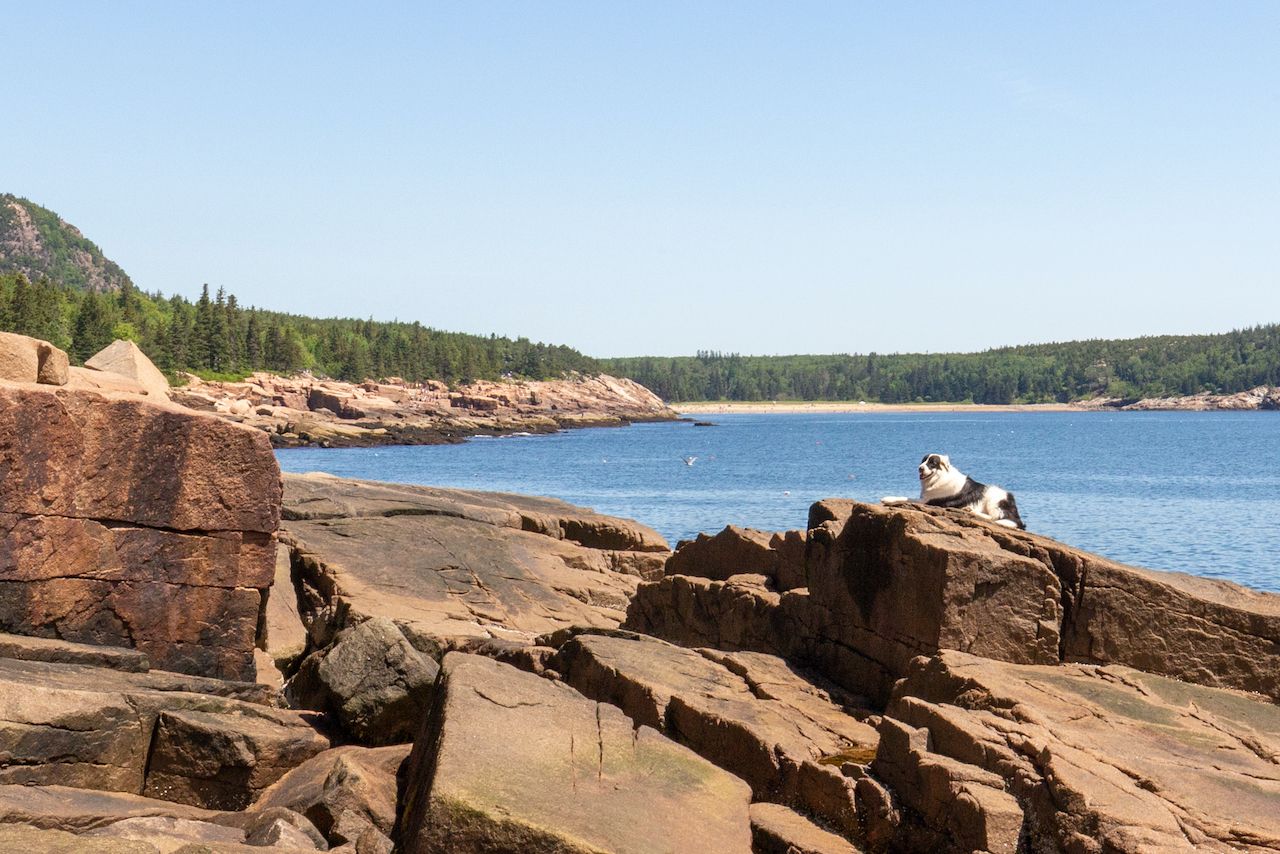
Photo: Mike Photoluvr/Shutterstock
Acadia is one of the smallest national parks (just 49,000 acres), but it’s perfect for dogs. There are 100 miles of dog-friendly hiking trails in the mountains and along the Maine coastline. One high point (literally) to take your pet is the park’s Cadillac Mountain, which climbs 1,530 feet up and looks over Somes Sound.
Acadia has more dog-friendly options than most national parks, but there are still some hikes that are either people-only or that should be taken on by experienced pups. For the full experience, become an Acadia Bark Ranger.
Best national park for kayaking and paddleboarding: Channel Islands National Park, California

Photo: Brian Swanson/Shutterstock
The clear, wildlife-filled waters of Channel Islands National Park are calling. Just a short boat ride away from the California coast (Santa Barbara, Ventura, and Oxnard are all options to leave from), the Channel Islands provide a number of ocean kayaking and paddleboarding options. Experienced kayakers can island hop between the eight islands, though the waters are a little rough for paddleboards or people new to kayaking. Keep an eye on the tide and weather, and it’s best to go with a guide from Santa Cruz Island on your first trip.
The calmer waters are still more than worth the trip. There are sea caves to explore at low tide, and sea lions rest on rock formations as kayakers pass by while bright orange garibaldi, the California state fish, can be spotted swimming below. It’s also common to see pods of dolphins and, depending on the season, gray whales in mid-migration from the waters off the coast of Mexico to the shores of Alaska.
Best national park for rock climbing: Joshua Tree National Park, California

Photo: Gary C. Tognoni/Shutterstock
Long before Alex Honnold completed his hard-to-comprehend free, solo climb up the 2,900-foot face of El Capitan, Yosemite was already in the popular imagination as the ultimate rock-climbing destination. And while the sheer granite slabs of Yosemite Valley may still be the holy grail for experienced climbers, there’s another destination, further south in California, that offers a lot more variety and plenty of options for everything from beginning to expert climbers. Joshua Tree is best known for its unusual agave plants that look like trees from a sci-fi iteration of an alien planet, but Joshua Tree also has rocks. Lots of rocks.
With over 8,000 routes and 2,000 boulder problems on tough quartz monzonite granite, Joshua Tree offers up every kind of rock face, including cracks and slabs, that climbers can hook their heels or jam their hands into. Quail Springs Rock and Intersection Rock are good places for beginners, while experts will appreciate the steep climbs at Clean and Jerk or overhanging climbs like at Big Moe. You can rock climb and boulder at Joshua Tree all year, but summers can get hot. Note that since you are in the high desert, winter nights can be very chilly, but daytimes temps are plenty comfortable.
Best national park for a honeymoon: Virgin Islands National Park, US Virgin Islands

Photo: BlueOrange Studio/Shutterstock
Have your Caribbean island honeymoon at a national park on St. John island in the US Virgin Islands. The parkland-to-private property ratio is higher on St. John than anywhere else in the US, with two-thirds of the 28-square-mile island dedicated to the national park. The options to fill your itinerary include hiking, beaches, and visiting historic sites of the indigenous Taino people. Or you can just do nothing at all and relax on the white sand beaches after snorkeling the coral reef at the nearby Coral Reef National Monument.
If you’re still not convinced about Virgin Islands National Park being the perfect honeymoon spot, keep in mind that there’s a beach in the park called Honeymoon Beach.